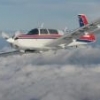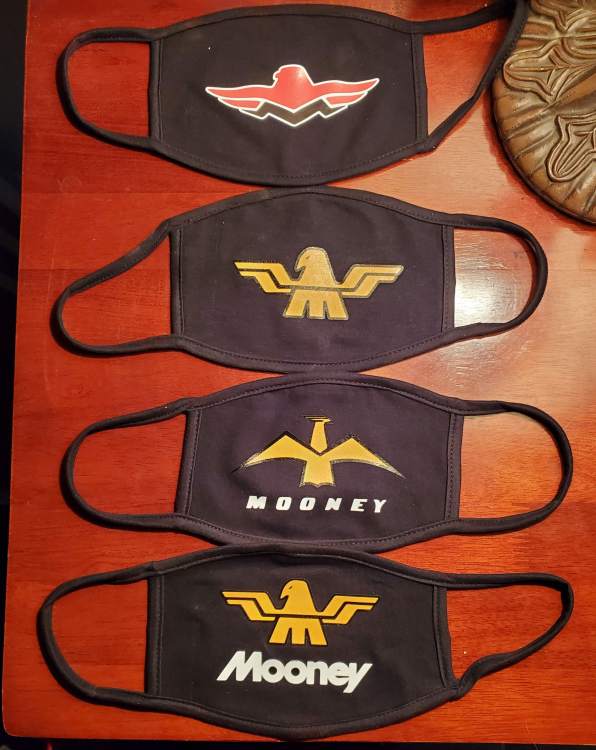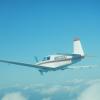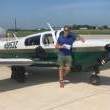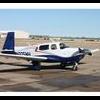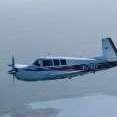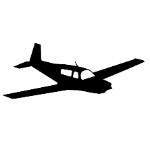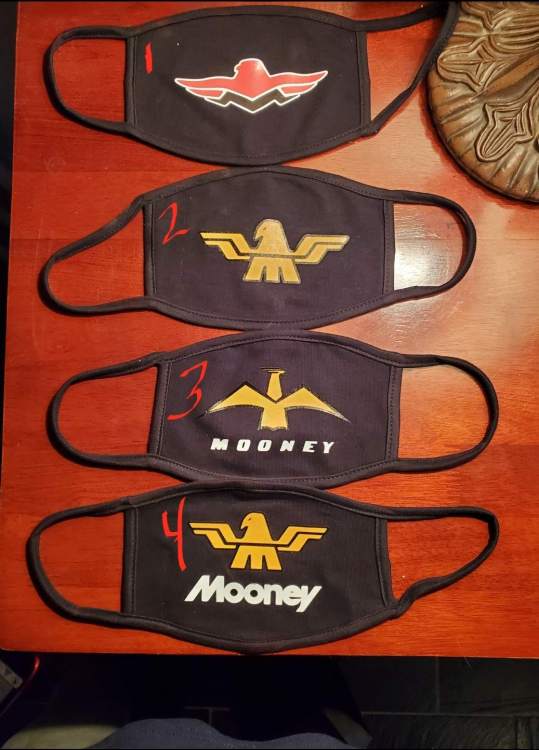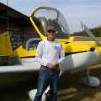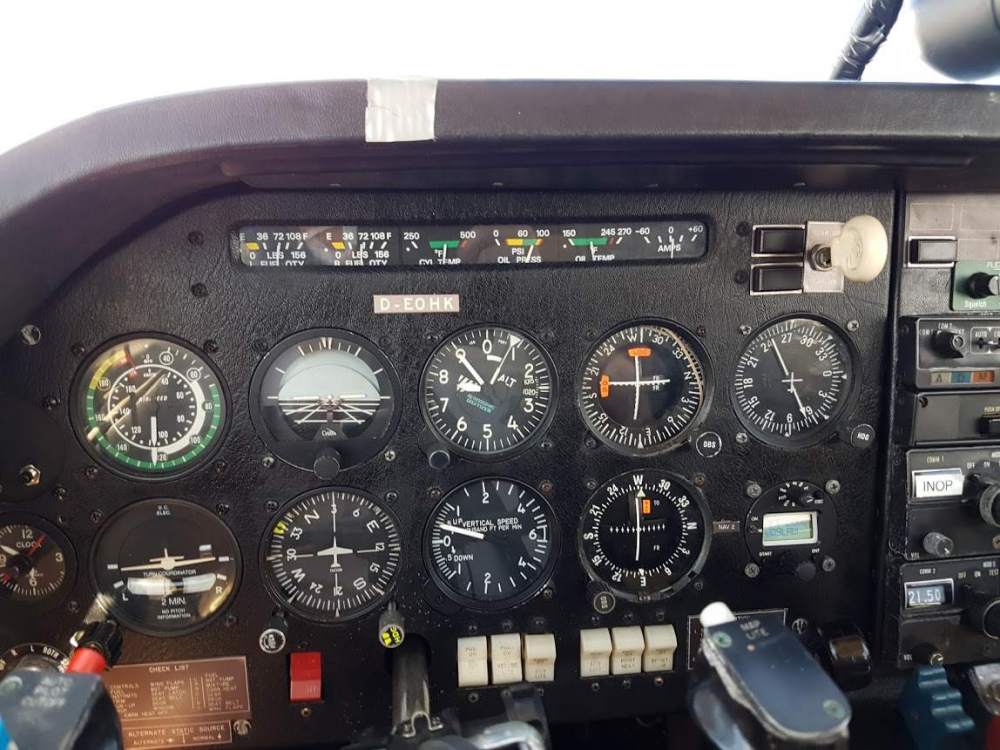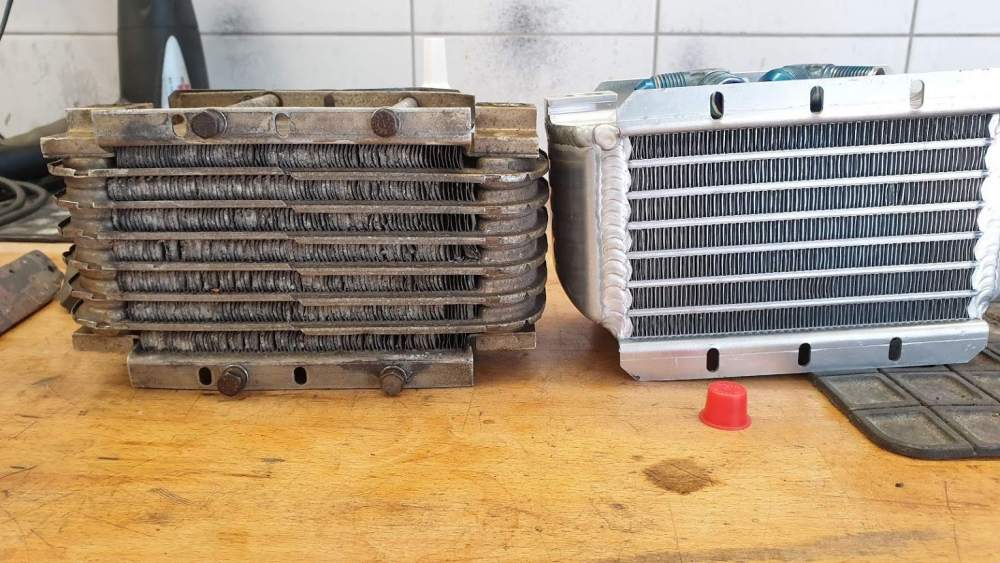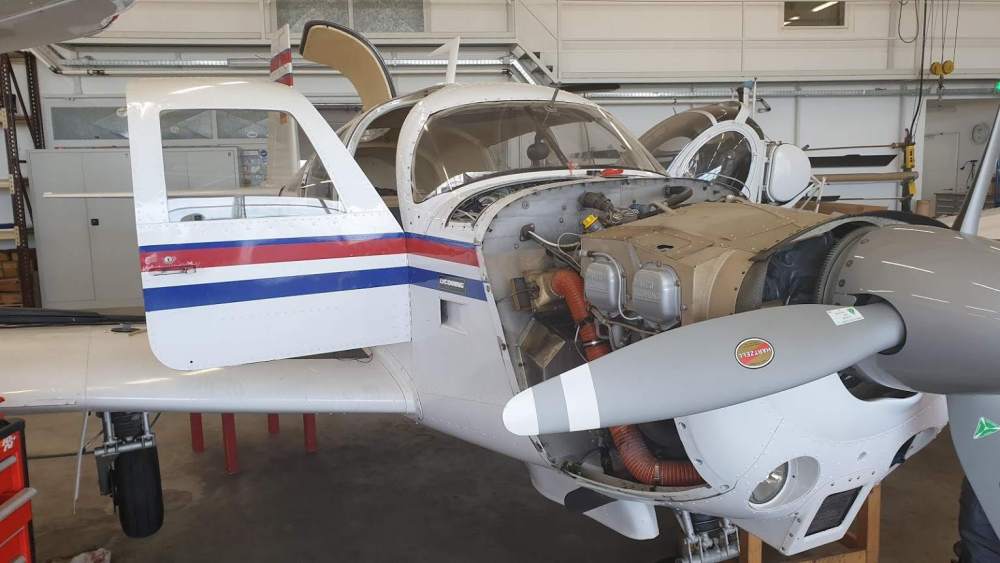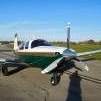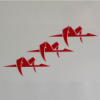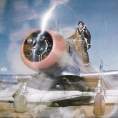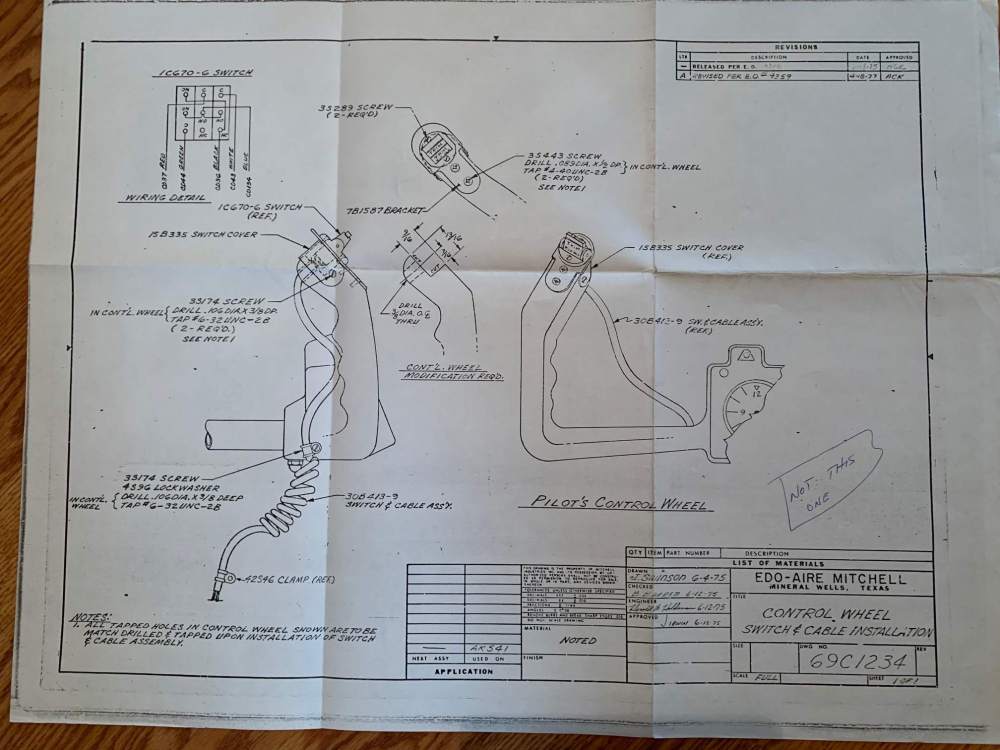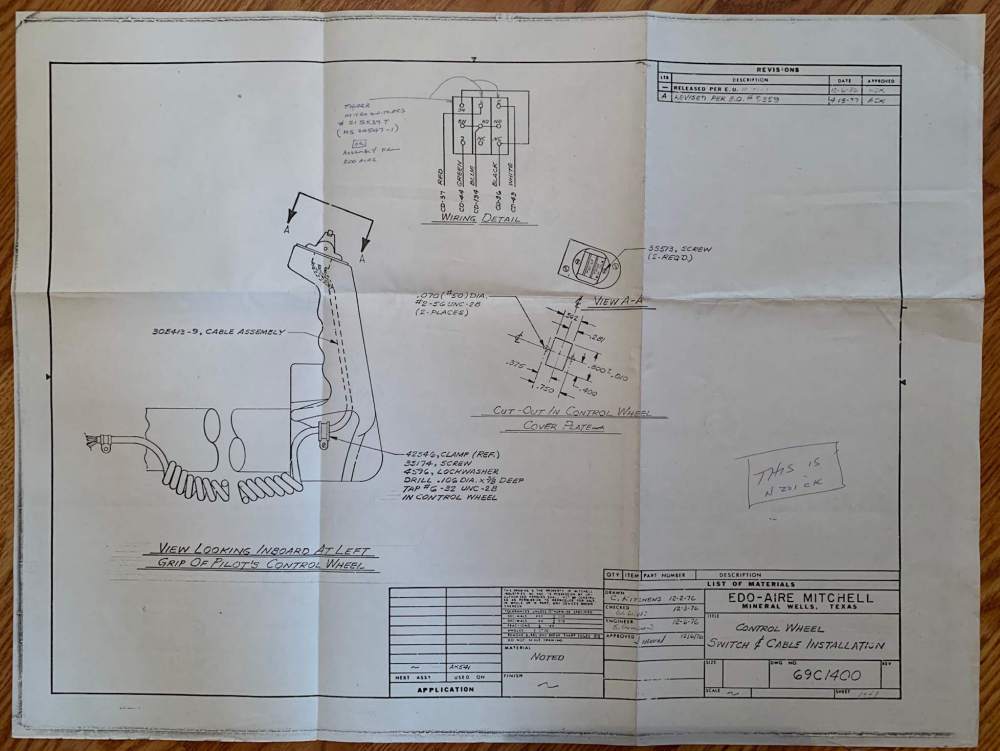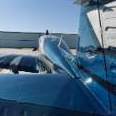Leaderboard
Popular Content
Showing content with the highest reputation on 07/29/2020 in all areas
-
8 points
-
Hi cctsurf, Its coming along slowly. I had a little set back on the upper cowling fitting correctly at the very front. It’s back at the composite shop being reworked along with the mold when we get the fit just right. I’d like to post more often but I feel I run the risk of the typical aviation product promises syndrome and don’t want that. Thanks, David5 points
-
Yes, ridiculous. You can always buy the Goodyear or Michelin tires. At least then the tube will cost less.5 points
-
This past Monday was the big day! Pick up Amelia from KPOF Poplar Bluff, MO and fly her home to KFYE, Fayette County Airport, Somerville, TN. Beautiful weather with winds 4 knots or less. Perfect for the pilot with only 7 hours TW time. Pictured is the previous owner and the new owner. I'm the short guy! I have done one landing in the 195 now. Yesterday I flew an L2 Grasshooper and manged 6 landings on my own. What a fun new challenge!5 points
-
It's personal preference and risk tolerance. I touched down and my nose tube blew from the stem being weak. As you're barreling down at 80mph wondering when the nose is going to collapse hoping you can keep it on the runway, it may change your perspective. Separately, when you're 1000 miles from home and can't leave because your loss of $100 tube and now have to pay for a rental car, hotel, mechanic, and possibly airlines for multiple people it's a drop in the bucket.5 points
-
4 points
-
3 points
-
I've had tubes that made it through 5 tires. I think replacing them on time is probably more prudent then replacing them with each tire. I would probably do every 3 tires or every 10 years which ever came first. Also, if you take the tire off and there is a fold in the tube, pitch it. YMMV3 points
-
For what it's worth, I used the free version of VREF offered through AOPA and it was helpful in selling my last plane. I put in the information exactly as VREF asked and got an output. I then added the fact that I was including ~$2500 retail worth of Bruce covers and some replacement parts/decals valued at ~$500 retail. I totalled this up, reduced the output by ~1% because the number seemed just slightly high compared to prior sales I had tracked. The plane then sold for that amount (well, 0.5% less than that amount). Honestly without VREF I would have had trouble determining the price and it helped me 'defend' my price when prospective buyers asked 'how i arrived at my price point'. I actually found that to be the most valuable piece of it--I had a solid leg to stand on in defending the price.3 points
-
Any of you that have read my stuff over the last 23 years know that I am not a fan of Bluebook or VRef and a true guide to value. The primary reason is that they have no clue when it comes to the actual sales of aircraft because sales prices are not published anywhere. Complicate this by a factor of 100 (vs. when BB started out so many years ago) with the number of variables available to be installed on a plane. There is no way to keep up with it. In the old days, you have a two or three brands of avionics and autopilots and about four typical installations in the panel (Nav/Com, ADF, DME, HSI and maybe a stormscope or radar). Believe it or not the base value in Bluebook for a lot of Mooneys, last time I looked at it, includes an ADF as typically installed equipment (maybe behind the times are they?). The more I looked at the BB guide and how they value not only the base aircraft but the upgrades, the more I stopped looking at it. And then cancelled my subscription altogether (after having one for 23 year plus another 5-6 with my predecessor). So they do the best they can do with info available to them (or maybe they just SWAG it) put numbers on paper or into digital form and tell the world what happened last quarter in aviation, as authorities, and then the market actually gravitates to their numbers. Tail wagging the dog. As mentioned previously, Rick Cox of VRef does actually call me regularly to get my take on the Mooney market. I appreciate that.3 points
-
And... does a PPI on the seller as much as the plane. You learn a lot about how the plane was cared for just talking to the owner.3 points
-
I bought the LASAR aluminum hubcaps then scratched them up and painted them with black texture paint two years ago. Still holding up. Sent from my iPhone using Tapatalk3 points
-
I, for one, to answer the OP's question, don't like VREF and wouldn't pay for it's opinion on anything. I prefer an Excel spreadsheet. If you're looking for a Bravo, find every one for sale in the whole country and put them on a spreadsheet. N numbers across the top and specs in the rows. It'll take longer than 10 min, but watching over the course of a few weeks will probably give you a pretty good idea of the market.3 points
-
“Sorry it took so long to fuel you up. We didn’t realize there were that many screws.” Sent from my iPad using Tapatalk Pro3 points
-
Had a chance encounter with a Antonov on Saturday. Those things are huge when viewed from the Mooney. We went out and flew around for a bit and got to see it again while we were on final.2 points
-
I try to look at ownership from the big picture, as you put it "drop in the bucket" perspective. It has resulted in me probably spending more on the plane, but everything is relative. I figure that I'll hop in the plane, spend $50-60 on gas to fly somewhere "just for fun" and then another $40-50 on a meal there, so keeping that in mind if I am looking at spending $2-300 on some kind of maintenance it shouldn't be a big deal. Last time I replaced the mains the tubes were almost twice as much as the tires. I put Air Hawk tires on for $79.95/ea but the only tubes Aircraft Spruce had with the 90° stem were Goodyear's at $148.99/ea. Haven't had any problems with them holding air, I think I add air about every 3-4 months when it drops from 30 psi to 29 psi, and that was almost two years ago.2 points
-
The tubes are what matters. Get inexpensive airhawks and use the saving on tubes. Planes under 10,000# are a waste for expensive tires but good tubes will make life better. -Robert2 points
-
Hey! I missed you at Oshkosh this year. But then I missed EVERYBODY at Oshkosh this year. CNoe2 points
-
As far as I know they don’t make ones for the outside of the mains that would be facing down with the gear retracted. But that’s only the little bit of info I know:) The LASAR hub caps are sold as a set. Two for the nose gear one side has a hole for the axle to go through and one on each of the main. Sent from my iPhone using Tapatalk2 points
-
2 points
-
Get the airstop tubes. They supposedly don't last as long, but they also hold pressure way better.2 points
-
The electric gear or flaps causing enough activity for the Stormscope to display is not a big deal. What, 5 seconds for each, presumably with the runway right in front of the plane? If the alternator was loosing enough electrons to display on the scope, it would probably be causing other problems. A properly installed Stormscope or Strikefinder will not display anything in the airplane normally. I bought a WX-8 in 1984 and the range estimation was primitive. Large, active storms appeared closer. A very strong lightning discharge would light a number of segments at the same time, often in a row toward the airplane. Seeing that happen a number of times, you would learn what was happening. The clear button was your friend for helping understand how far away and how strong the storm activity was. Just like radar interpretation, it takes some learning and experience. Way back when, the Stormscope directions explained this pretty well. The basic instruction of don't fly into the dots or lighted segments worked pretty good back then. And today.2 points
-
I agree with a lot of the above. However, I do feel the bravo and 231are IMO the hardest Mooney aircraft to put a value on. I think this is because of the wide range of prices, values, and maintenance history. The long period of time some have spent on (and off) the market does not help the valuations. @V1VRV2 in the time you have been looking a few mid ‘90’s J’s, 4-5 nice ovations, and a couple bravo aircraft have sold. IMO if you have been tracking these aircraft you would have a very good idea at what price point things are moving. The hardest part of the equation is finding one at the upper range of the price point that has superior equipment and maintenance history.2 points
-
Hi. Climbing from cca 3000 ft to 8000 ft yesterday. At the airport (cca 1300 ft was 30 grad C), full power, solo. The engine is 30 Hours after overhaul, new oil cooler, installed Lasar cowl fairing. P.s. never had problems with high oil temperatures with my M20C before repair. On my Zenair Zodiac experimental UL I was trying years ago to solve marginale oil temperatures (of course Rotax engine with water cooled heads, engine with gearbox and dry oil sump...). I changed all available oil coolers, from small to large (available 3 types S,M, L) without significant success. The best result was achieved, wenn I modified the airflow around the oil cooler with deflectors. The airflow around cowling is without sensors ``known unknowns" and is sometimes not according to our ideas. Hopefully not off topic. lg,m2 points
-
2 points
-
Interesting, Similar challenge... Air that flows through the cooler mounted up front... dumps air/pressure below the cylinders... again not very helpful for cylinder cooling... It would help if we had a few pressure sensors to put in various locations around the cowl... I think David had to demonstrate everything working in concert during his cowling development phase... Early days of the guppy mouth... air was known to form eddy currents above the cylinders, some air would come back out, throwing dripped oil back out and on the windscreen... Fortunately what we have works over a wide range of conditions... In deep cold, Ovations have a plate that blocks half of the oil cooler at the back of the IO550.... A similar balance of air flow exists here as well... except Os don’t have cowl flaps to close... Lots of variables... Air flow through the cooler... Oil flow through the cooler... OAT... OilT... Where the waste air, pressure and temp, goes.... How well the Vernatherm is working... if it doesn’t work properly, less oil gets pushed through the cooler... Makes that... always leave the flaps 1” open, make a lot of sense.... more sense today, than ever before... PP thoughts only... Best regards, -a-2 points
-
A Vref Appraisal or a VRev evaluation or a Bluebook evaluation or a Professional "Appraisal" or a Jimmy Garrison evaluation is only as good as it relates to what an arms length transaction actually reflects. And a lot of it that transaction depends on the buyer and his needs or wants. A good example is TKS. Appraisers and Value Guides and Jimmy will add value to a Mooney anywhere from $10,000 to $20,000 for the installation. Fact is, it costs in excess of $50K to install it. But it is a reality that if a buyer lives in the PACNW or Great Lakes or New England, that this installation can add well more than the typical $15K that guides add. It may be worth $50K to the right buyer who HAS TO HAVE TKS and HAS TO HAVE IT RIGHT NOW. And it may be worth zero to a buyer in Florida or Arizona. What about paint? VRef adds $6000 for 'New Paint'. I've personally seen some recent paint jobs that ranged from $22K to $42K on Mooneys. If cosmetics is your thing, then the value you derive from a gorgeous new paint job may be well more than you get from an appraiser or a book. I have purchased aircraft for quite a few clients. Everything from Bonanzas, to TBM-700's to PC-12's to King Airs (at least two of each of those models). Everybody knows I'm a Mooney guy. But it doesn't take long to interview a buyer and figure out what is important to him and then survey the market (both advertised and unadvertised - brokers and dealers are pretty good at finding unadvertised aircraft) and then take a simple spreadsheet to find the right value (weighted for specific needs). I have found that in almost every case mentioned here when I have been engaged to buy a plane for a client, that the plane they are focused on is the wrong plane for them and usually the wrong plane for value. In ever case but one, we wound up buying a different plane. Is a VRef Appriasal worth $800. If you want a 'by the book' evaluation, probably so. But if the appraisal is not weighted toward your actual needs, then you may get a final number that doesn't come close to your reality as a buyer for what you need in an aircraft. Then you have to ask yourself, is the $800 spent to determine the value for someone who is not you worth it? On the other hand... Eh... $800 in aviation is peanuts. EDIT: Just to clarify: I don't do Acquisition services on Mooneys. Conflict of interest to my clients who turn their aircraft over to me. EDIT 2: I do Market assessments on occasion for aircraft owners. I work by the hour. Typical assessment takes about 4 hour at $100 per hour. As long as I don't have to spend a bunch of time tracking down info on the plane. That assumes most of the data on the plane is provided to me in a concise and easy to decipher manner.2 points
-
Not much to it as Mooney uses standard Cleveland wheels and brakes. It's a good idea to let the air out of the tube before removing the axle nut just to be safe. Be sure to torque the wheel bolts properly and don't pinch the tube. And don't get the bearing preload too tight when putting it back together. The only Mooney-specific thing I can think of is on planes with the inner gear doors you need to keep track of the washer and spacer placement to preserve the gear door alignment. Everything is covered in the Service Manual. Skip2 points
-
My fuel management follows the KISS principle. My tank, full, holds 75.6 gallons. I used to use just one piece of paper in the cockpit, and I would write 37.8 at the top of a left and right column. I takeoff and climb on the left tank. I burn around 15 to 17 gallons out of that tank, and I am a little superstitious about it. I like to burn to a number that makes the math easy, so 17.8 gallons is the best (37.8-17.8 gives you an even number). I switch tanks and subtract the left tank fuel burn on my piece of paper, leaving lets say 20 gallons in the left tank. I fly to the point where I start my descent into my destination, note the fuel used in the right tank, subtract that from the right tank, and switch back to the left, which has 20 gallons. My fuel flow, LOP, is 11.1-.3 GPH, so this gets me around 3 -3 1/2 total hours of flight time before I start the descent. The 20 gallons is plenty to get down and land. If I go further than a total distance of about 4 hours I just burn more fuel out of the right tank before switching. The plane does not care if the fuel is balanced between the two tanks, it flies the same. There is no point in switching back and forth every five gallons, or every 15 minutes, or the like, that just makes it complicated to know how much fuel is in which tank. 4:30 is about as far as I normally go before landing to refuel, although I have done a few longer. If the winds in the Flight Levels are really good, best not to come down. The method is simple, and uses points that are changes in flight to trigger the switches, so easy to remember. My total endurance is about 6:30, it takes a very long trip to land with low fuel. I no longer carry the piece of paper except, maybe if it is a flight of 4 hours or more so I need to keep more careful track. This worked well when I had factory gauges, the only problem was overcoming the sphincter effect of the lack of accuracy of those gauges. I have CiES now, so less of that.2 points
-
I’m thankful that I live in an area that’s not overly populated and I don’t wear a mask. I’m also able to bypass the store that have mandated them now. Looking forward to this craziness going away.2 points
-
Gotcha...thanks for following up, as I may have mis-read. Agree they aren't the cheapest on the planet...far from it, but a necessary evil.1 point
-
I had a tube blow, on a tire the MSC replaced without my permission during annual, otherwise I would have gone with airstops, but they didn’t replace the tube. Thankfully it was at my home airport. My air hawks last long enough that when it comes time to replace, I will replace the tube.1 point
-
If I was going to have hub caps, I would only put them on the mains side facing out, for aerodynamics. Can you buy them individually?1 point
-
My $0.02: In regards to automobiles and valuation tools, Kelly Blue Book, Black Book, Edmunds, etc. values are a racket (steered by the dealer lobby). I have access to Manheim’s wholesale vehicle market tools which use actual dealer-only auction sales data. I frequently see vehicles sell at auction for a fraction of what KBB claims they are worth. My point is that these consumer level valuation tools don’t quite paint the whole picture. For example yesterday I bought a ‘12 F-350 4x4 reg cab work truck for 5.8 AMU’s. The “street value” according to KBB and used car lot research is 10-13 AMU’s. Did I really get a deal? Nah I paid what most dealers do for this type of hoopty. I’d personally rather spend my dime with a reputable salesman to valuate my Mooney as they truly have the pulse of the market.1 point
-
In the last handful of months I saw one fuel cap at the gas pump, another on the ground near the hold short area.1 point
-
Well, my 30 year old McCauley will make it through the overhaul, but it needs teflon inserts in the hub because the blade o-ring seats are worn, about a 1 amu hit. An option, I’m told, that wasn’t available up to just a couple years ago. Sooooooo, I’m up to 4.9 amu. Better than 10+(?) amu for a new prop, or a coupIe amu for a new hub. I’m lucky I have an understanding comptroller... Last annual, the prop had some fore/aft play in one blade in particular, but it was within spec and didn’t show any evidence of throwing grease, ever. I wonder if I’d delayed the overhaul and run it another year or three, if it would have worn enough that the teflon insert fix wouldn’t have been an option requiring a new hub. When the teflon wears, that can be replaced. I’ll have to ask how many hours they figure the teflon lasts. Scheduled mx is sometimes expensive. Deferring scheduled mx is sometimes more expensive. The prop is under tremendous stresses. For me, having confidence in the prop is worth the piece of mind. Besides, I just purple-polished the spinner.1 point
-
Choices... 1) plain white discs... original... 2) polished and shiny... Lasar... 3) Hubba Hubba hubcaps.... has the access panel to reach the air valve... @Speed Merchant ? 4) Many get a hole drilled for access... PP thoughts only... Best regards, -a-1 point
-
Then you are unable to read between the lines and/or unable to judge the horseflesh. In that case, hire an appraiser. Vref does not have people who work only for them. They will contract an appraiser and report his report to you. You can cut out the middle man by googling "aircraft appraiser". But if you are simply. afraid of paying 2000 too much on a 250K deal, the objective is all wrong.1 point
-
I did it shortly after it came out. Easy to do. I thought it was good safety of flight issue to address after Amelia's experience. I ordered mine from LASAR. We haven't been able to order parts directly from the factory in years, just through MSC's.1 point
-
NicoN, We all make mistakes; I won't mention mine here. Do you believe that nothing shorted out and that the wires were simply ripped loose (master switch was OFF)? I've got a couple of different drawings/schematics from the factory "Edo-Aire Mitchell" trim-switch installations that I'll attach as a .jpg. It's been a while since I messed with that system, and on my installation I do not have "auto-trim". The trim servo is independent of the "altitude hold" system and does not utilize a "clutch". My "altitude hold" system (STEC) was a later addition that only annunciates an out-of-trim situation; the pilot must trim manually (either electric or with the trim-wheel). The independent trim-servo should be activated by applying 12V across the motor (and reverses with polarity change). But if you're tied into an A/H unit it could be different. I also believe (but am not certain) that there is a box behind the panel containing a relay for the electric-trim system that isolates the micro-switches from the full amperage draw of the motor. You may hear a faint "click" of the relay under the panel as you compress the trim button. I don't have a diagram of that relay box. I hope this helps. Let me know if you have any other questions. CNoe1 point
-
The only reason that cap didn't fly off is it KNEW you had a spare on-board!1 point
-
I was a line guy for well over ten years, and it was amazing how many times pilots with crappy equipment that broke while we were doing our thing would try to blame it on us vs their lack of care for their airplane. All that being said, I have seen some line guys do some very stupid things, both when I was working as one, and as a flight crew member.1 point
-
1 point
-
Gosh, the wind must have been really strong to blow a NWS employee into multiple street signs.1 point
-
1 point
-
I successfully downloaded nav data and updated my GPS navigator today. Avidyne Too soon??1 point
-
I may have not been clear, we see a lot of Mooney prop strikes with pilots new to type - regardless of renter or owner. Renters just illustrate the point. Perhaps even more true in Europe where many fields make landings so expensive that pilots don't tend to get the landing practice we do here in the US just because of the added expense. That's what I heard from other PPP instructors that went over to Germany to do a PPP a number of years ago.1 point
-
1 point
-
1 point




